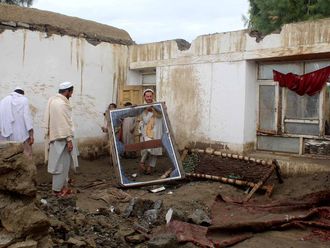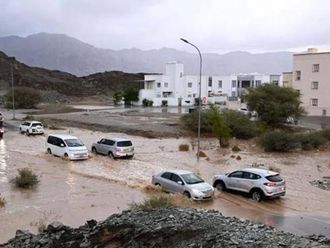
On Everest, tragedy is almost normal. Ten people have died so far in a series of accidents this climbing season, four more than mountaineering officials expect in a typical year.
But, questions are being raised now as fatalities continue to rise. The deaths are attributed to the unusually high number of permits being given to climb the world’s highest mountain.
The major causes of death on Everest include exhaustion, frostbite, falls and altitude sickness. But the biggest reason in recent years has been avalanches. Experts say highly inexperienced climbers who can afford the cost are now keen to climb Everest and see it as another adventure.
Veteran mountaineer Alan Arnette told Gulf News, “Everest is a magnet to climbers of all capabilities. I would like to see all climbers, regardless of the price [they pay] for their climb, to have the experience, skills and judgement to climb with a minimum of support.”
Still, the US-born climber said: “Both Nepal and China must insist that, before attempting Everest, a climber should have scaled a mountain of 8,000 metres. This would allow climbers to test their skills and how their body performs at an extreme altitude. Everest is a dangerous climb. But compared to other mountains, it is one of the safest. However, because it is the highest, each death gets disproportionate media attention.”
Reports surfaced that bodies of four climbers were recovered from a tent early this week by a team of rescuers who were scouring the area, known as ‘the death zone’ to recover the body of a Slovak mountaineer who had died over the weekend. But officials of Nepal Tourism Department (NTD) and the Nepal Mountaineering Association (NMA) are casting doubts on when exactly the four people might have died, as it is not unusual for bodies to remain on the mountain due to difficulties in finding them.
An NTD official, Durga Dutta Dhakal, reportedly told Reuters: “I can categorically confirm that these bodies are not of the climbers from the current session.”
But what has startled the mountaineering associations is the extremely risky mission given to a team of Nepalese climbers to retrieve the body of Ravi Kumar, an Indian national who died last weekend. The 27-year-old reached Everest’s summit, but died hours later after descending to 8,400 feet. His body was spotted inside a 200-metre crevasse, where oxygen levels plummet and risk of altitude sickness is high.
Criticising the mission to recover Kumar’s body, president of NMA, Ang Tshering said, “It’s not just risky, but a most dangerous act to try to bring a frozen dead body from such a dangerous zone.” He said the body might have accumulated ice to weigh around 130kg and ferrying such a heavy load at an extreme height meant putting other climbers at risk.
This led mountain expert Kenneth Kalmer to point out that the human body cannot acclimatise to an altitude higher than about 18,000 feet. Kenneth, who has been on six treks to Mount Everest as expedition doctor and climber said, “Beyond that [altitude] your body just deteriorates.” He warned people not to attempt Everest, unless they were actual mountaineers.
Stressing that the weather this year is especially harder on Everest, the NMA president said, “It has been much colder, windier and it snowed a lot more than previous years. Due to this, climbers are struggling.”
Meanwhile, Phupu Chowang Sherpa of Arun Treks and Expeditions, which organised Kumar’s climb, admitted that efforts to retrieve his body were being undertaken under pressure from the Indian embassy in Kathmandu and Kumar’s family. “Though demanding, it will all depend on the Sherpa team’s efforts,” he added.
Safety has actually gone up
As Nepal opened up Everest, from one national expedition per year to allowing commercial climbs, Everest became safer. Western companies from New Zealand, America, Germany and the UK, dominated the Everest market. Deaths were reduced.
From 1923 to 1999: With 1,169 summits, 171 people died. But the deaths declined drastically from 2000 to 2015 with 5,832 summits and 112 deaths. The reduction in deaths is primarily due to better gear, weather forecasting and more people climbing with commercial operations.
(Source: Himalayan Database)












